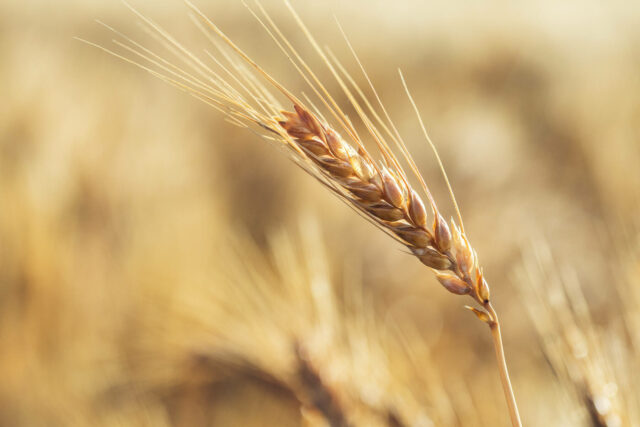K-State researchers lower gluten content, maintain dough quality in bread wheat
MANHATTAN, Kan. – Kansas State University researchers have reported a breakthrough in developing wheat-based foods that contain lower amounts of gluten, a discovery that may lessen the adverse effects for those with celiac or other autoimmune diseases.
Scientists from K-State’s Wheat Genetics Resource Center and the USDA’s Agricultural Research Service — in partnership with Kansas Wheat — successfully used a gene editing technique known as CRISPR-Cas9 to reduce the presence of two types of gluten-coding genes called gliadins that are known to be abundant in immunoreactive peptides – the amino acid building blocks that form proteins.
Where can you find gluten?
Gluten is a protein often found in wheat, barley and rye. When people with celiac disease eat gluten, their body mounts an immune response that attacks the small intestine and the small, fingerlike projections known as villi that help the body absorb nutrients properly.
According to the Celiac Disease Foundation, celiac disease affects 1 in 100 people worldwide, but only about 30% are properly diagnosed.

Golden wheat head in field.
“We were very surprised that once we edited those genes, we reduced the immunotoxicity caused by gliadin genes in wheat by 47-fold,” said Eduard Akhunov, University Distinguished Professor in K-State’s Department of Plant Pathology and director of the Wheat Genetics Resource Center.
Scientists and Gene Editing
Akhunov leads a group of scientists applying advanced methods of genomics, genetics and genome editing to improve wheat. In this project, the editing of gluten genes was performed by postdoctoral researcher Zitong Yu.
Akhunov said gluten likely will never be completely removed from wheat since it is important for bread-making. Gluten provides the texture, flavor and moisture in such products as bread, bagels, pastries, noodles and more.
“In our edited lines, we also found that while there was a reduction in toxicity (due to lower levels of toxic gluten molecultes), we did not have any reduction in the dough quality that is important for bread-making,” Akhunov said. “That’s extremely important. We achieved these two seemingly contradictory objectives – reducing toxicity, but maintaining the ability to develop quality dough.”
Akhunov added that even though reduced levels of gluten achieved in this study won’t make wheat immediately safe for those with severe levels of celiac disease, “it is important to step forward.”
“Wheat varieties with reduced toxicity levels will help to broaden wheat-based product options for people with minor gluten-related issues,” he said. “The knowledge gained in this research could eventually pave the road for developing new varieties that will be safer for people with celiac disease.”
The very nature of scientific study and wheat breeding means varieties with reduced gluten content may not be available to consumers for many years. Aaron Harries, the vice president of research and operations for Kansas Wheat, said the trait would not be included in all new varieties and “most likely would be grown under contract with food manufacturers.”
“Wheat research is focused on developing new varieties that meet the demands of the consumer – both domestic and international,” Harries said. “Developing wheat that is safer for celiac sufferers decreases the number of consumers forced to consider wheat alternatives.”

Healthy Homemade Bread.
He adds: “There are many wheat farmers and members of their families in Kansas that have celiac disease. It is ironic and unfortunate that they raise wheat for a living but can’t eat wheat foods. Most consumers would prefer not to give up wheat foods in their diet. Developing wheat varieties that are consumable by people with celiac disease would make their lives much easier.”
CRISPR-Cas9 is a genome editing tool that is faster, cheaper and more accurate than previously used methods of genome engineering. Akhunov said his research team worked with a common wheat cultivar known as Fielder, which is amenable to genome editing.
K-State’s research — which has received funding from Kansas Wheat, USDA’s National Institute for Food and Agriculture, and the Bill and Melinda Gates Foundation — is published in the Nov. 17 issue of the Plant Biotechnology Journal.
###
Originally posted at https://www.ksre.k-state.edu/news/stories/2023/12/agriculture-gene-editing-gluten-wheat.html